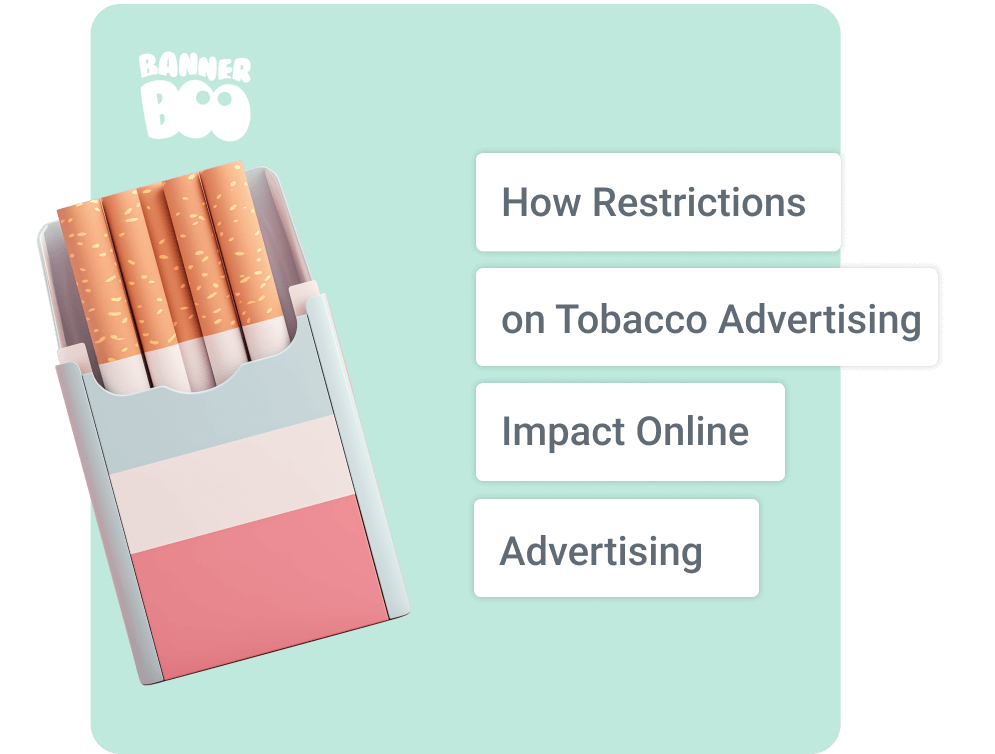
Advertising is the most effective way to attract attention, engage consumers, build loyalty, and increase sales. But what should you do if the government imposes restrictions, strict rules, and bans on advertising the products your company manufactures?
How marketers and advertisers of tobacco companies cope with government restrictions and what methods they use to promote their products — read more in the article.
The tobacco industry has historically attracted potential customers and shaped target audiences through vibrant advertising, showcasing successful lives, freedom, and achievement. Thanks to powerful imagery, advertising campaigns popularized smoking, turning it into a habit that often accompanied people throughout their lives.
Cigarette advertising has long cultivated a positive image of smoking, creating the illusion of a "cool" lifestyle, especially among youth. This is why teenagers become the target audience for tobacco products and start smoking at a very early age.
However, with the advancement of science and the growing awareness of the negative effects of smoking, it became clear that cigarette advertising has serious social and medical consequences that extend far beyond the profits of the industry. Smoking is one of the leading preventable causes of death. It leads to severe diseases such as lung cancer, cardiovascular diseases, and chronic obstructive pulmonary disease.
Mortality by risk factor
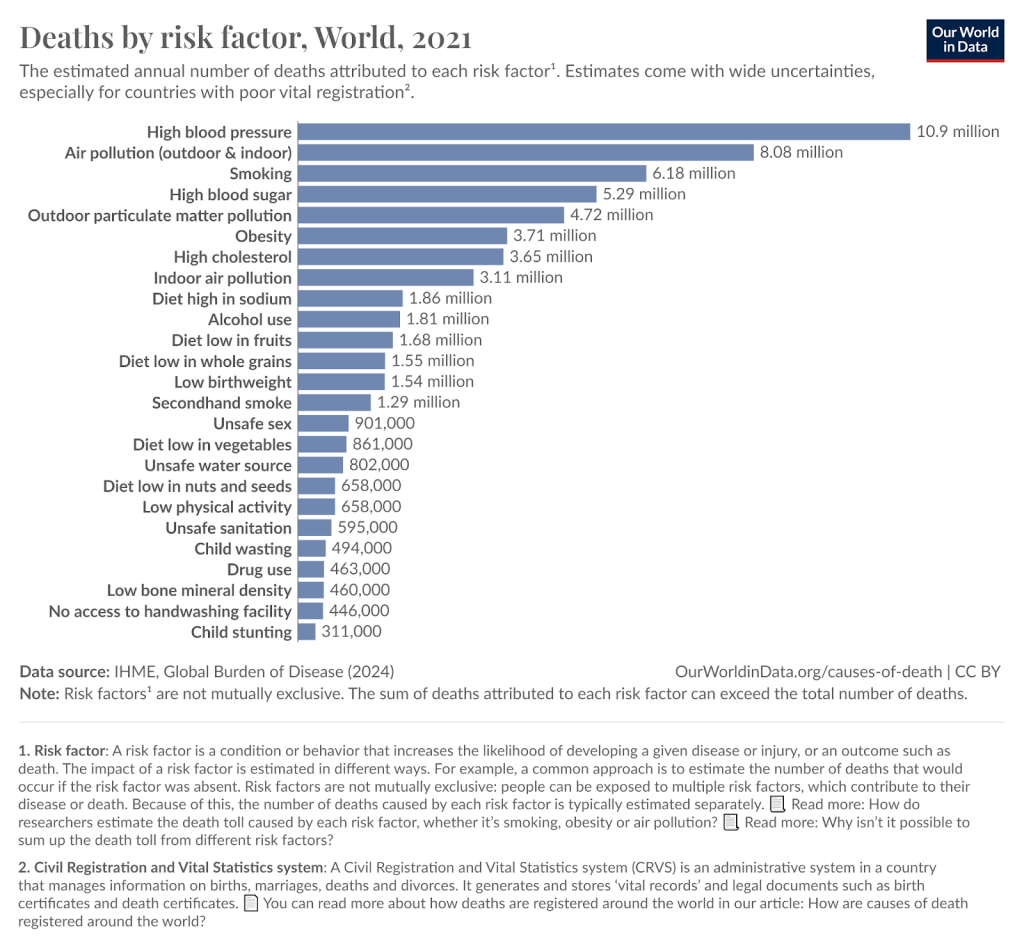
* material taken from the site: ourworldindata.org
As a result, most countries began introducing restrictions to prevent the promotion of smoking and reduce tobacco sales, especially among teenagers, as they are not yet able to fully assess the health risks. These restrictions affected many aspects of tobacco companies' activities, but advertising-related ones were among the most significant.
The new rules applied not only to tobacco companies themselves but also to businesses providing advertising services. Consequently, even with strong demand, marketing and advertising agencies refused to promote tobacco products due to the severe penalties prescribed by law for violations, including hefty fines.
The bans were based on both ethical considerations and the desire to protect the population from the negative consequences of tobacco use. Over the past decades, the conditions for promoting tobacco products have been challenging. Despite all the bans and advertising restrictions, marketers have done everything possible to increase sales and maintain a stable percentage of their target audience.
We'll discuss the advertising restrictions for tobacco companies in detail and explore new opportunities that emerged for businesses with the introduction of these bans further in the article.
If you ask the 25+ generation about cigarettes and the most memorable advertising they recall from the past, most answers will likely mention the cowboy or the camel. These strong images were created by the marketers of tobacco companies and remain vivid even after many years.
Just 20 years ago, cigarette ads could be seen everywhere: on billboards, television, radio, or city lights. A large amount of bold, vibrant advertising did its job — it ingrained a strong image of smoking in the public's mind.
Over the past decades, governments have been searching for ways to break these entrenched images and highlight the negative impact of tobacco on the human body. This has been successfully achieved through advertising and promotion restrictions for cigarettes. The first steps included banning video advertisements and billboard ads. People began to notice a reduced influence of tobacco marketing.
Following this, the use of phrases that formed a positive image of smoking was prohibited in advertising. Cigarette packs began to feature "shocking" images illustrating the consequences of smoking and constant reminders that "Smoking harms your health." But even these are not the only restrictions tobacco companies have faced.
With the rise of digitalization and the advent of social media, marketers sought to carve out their niche and promote their products through new advertising channels. However, they were met with restrictions from governments here as well.
Restrictions on online advertising of tobacco products are an essential part of the global strategy to combat smoking. These measures are designed to protect people's health, particularly children and youth, and to create barriers against promoting harmful products in the digital space.
Reasons for Restrictions
The internet is the primary source of information and entertainment for teenagers and young people. The ban on online advertising helps prevent the formation of smoking habits among the most vulnerable audience, who are unable to fully assess the health consequences.
Through internet advertising, tobacco companies can quickly reach large audiences, especially in countries where traditional media advertising is already banned.
Many advertising platforms use subtle, targeted ads that allow tobacco brands to attract even those users who are not actively seeking information about tobacco.
In the digital space, non-standard advertising formats are often used (native content, collaborations with bloggers, or advertising through video games), making control more challenging.
Main Restrictions on Online Tobacco Advertising
Most countries (USA, EU countries, the UK, Ukraine) prohibit direct tobacco advertising. This means cigarettes cannot be featured in layouts, videos, or even natively (e.g., a movie character is not allowed to smoke in a scene, even if the character is based on a real person). As a result, marketers are forced to constantly seek effective strategies and alternative approaches to promote their products without violating legal restrictions.
However, strategies are not straightforward either, as what works and is allowed in one country might not work or be banned in another. This requires significant effort for effective and impactful promotion.
As mentioned earlier, governments actively combating smoking propaganda have imposed strict restrictions on packaging designs and advertising layouts. Brands are prohibited from using bright colors, youth-oriented styles, or imagery that might attract minors. They cannot use phrases that create a positive perception of tobacco products, and they are required to display the consequences of smoking through photographic images and warnings such as "Smoking harms your health."
An example of how cigarette packaging should look:
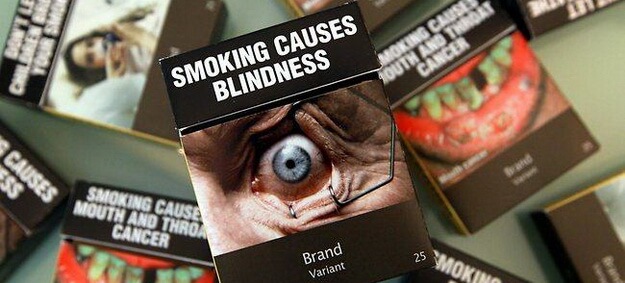
* material taken from the site: eurointegration.com.ua
Brands are also prohibited from using emotional messages, calls to action, or associations with entertainment or lifestyle. All these restrictions create challenges in shaping the proper perception of cigarettes and complicate the creation of memorable content.
The prohibition on targeting young consumers makes it challenging to create campaigns that look modern and appealing. Tobacco brands also face strict restrictions on advertising through social media platforms (Facebook, TikTok, and Instagram), significantly narrowing access to their target audience.
Recently, tobacco manufacturers have been facing stiff competition as new products that position themselves as "less harmful" and differ from traditional cigarettes with a variety of flavors continue to emerge. These products are gaining popularity among the public, reducing loyalty to traditional tobacco.
It is worth noting that vapes, e-cigarettes, smokeless tobacco products, and flavored tobacco products face less stringent restrictions and legislative regulations in some countries worldwide. This puts traditional tobacco brands in a very uncomfortable position.
Balanced nutrition, regular exercise, adequate water intake, and a focus on emotional well-being are current trends that also influence the advertising activities of tobacco marketing companies. These new tendencies complicate the creation of creatives and the development of effective marketing strategies.
Restrictions on online tobacco advertising are an important tool for reducing the promotion of smoking and protecting public health. While they pose challenges for the tobacco industry, such measures contribute to fostering a healthy lifestyle where harmful products are not imposed on consumers.
To preserve public health, tobacco advertising is strictly regulated by law or completely banned in many countries worldwide. These measures aim to protect children and youth from the influence of harmful products.
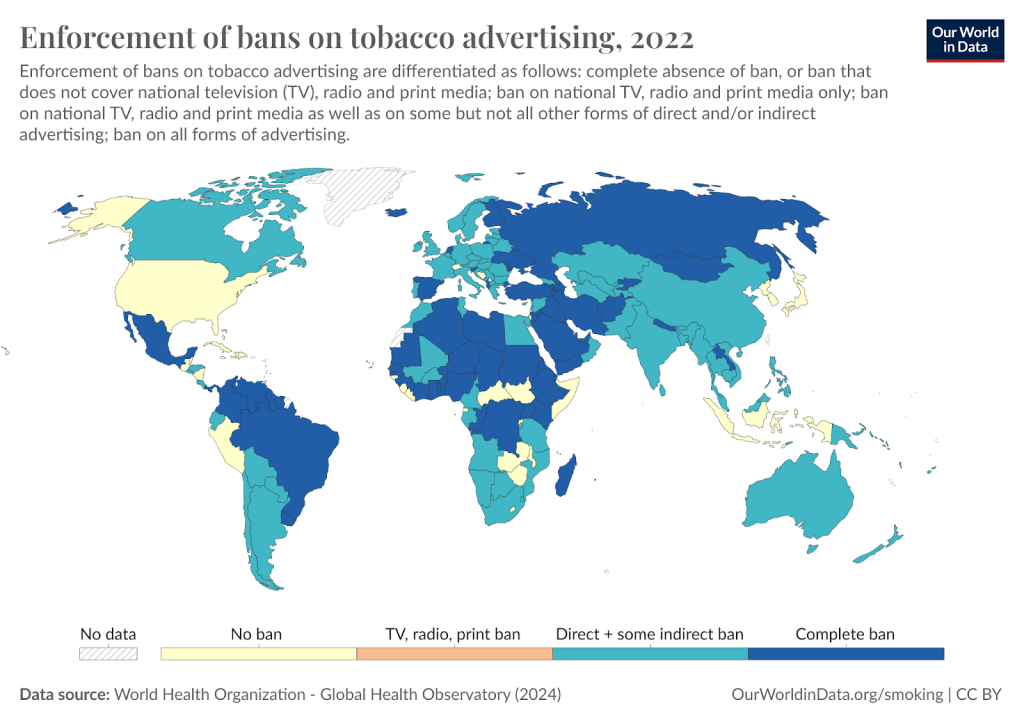
* material taken from the site: ourworldindata.org
Legislative regulations in the European Union, the United States, the United Kingdom, and Ukraine share common features as well as unique characteristics.
For example, in EU countries, the Directive 2003/33/EC prohibits the advertising of tobacco products in all printed media, on radio, on the internet, and the sponsorship of events with a cross-border nature. Following the adoption of the Directive 2014/40/EU, strict requirements were introduced regarding the labeling and packaging design of tobacco products, limiting the use of brand colors and logos.
The appearance of advertisements in EU countries is strictly regulated:
The use of bright colors and imagery appealing to youth is prohibited;
Health warnings must be prominent and cover at least 65% of the entire packaging;
Advertising alternative products (vapes, e-cigarettes) is prohibited if they are associated with traditional tobacco products.
Legislative regulation in the United States is somewhat different. Advertising is banned on television and radio, and print advertising is restricted (except in specialized magazines). Marketing and promotion of electronic cigarettes are overseen by the FDA (U.S. Food and Drug Administration).
Appearance of Advertising in the United States:
The use of misleading words such as "mild" or "light" is prohibited;
Digital advertising is allowed only if targeted at an adult audience, but brands are prohibited from using youth-oriented symbols or slang;
Mandatory inclusion of health warnings on packaging and in advertisements.
The United Kingdom's Tobacco Advertising and Promotion Act 2002 prohibits all forms of tobacco advertising, including print and online advertising, as well as sponsorship of sports and cultural events. Brand elements on packaging are also banned, with standard packaging introduced in 2016.
Appearance of Advertising in the United Kingdom:
The use of brand logos and unified corporate fonts is prohibited;
Health warnings must be prominent and cover at least 65% of the entire packaging;
Alternative products (e-cigarettes, heated tobacco systems) can be advertised under strict supervision with limited access to youth audiences.
The Law of Ukraine dated July 3, 1996, No. 270/96-VR prohibits any advertising of tobacco products on television, radio, in print media, and online. Additional restrictions on advertising e-cigarettes and heated tobacco systems have been in effect since 2022.
Appearance of Advertising in Ukraine:
The use of bright, attractive images or positive associations with smoking is prohibited;
Packaging must include health warnings and cannot feature branded visual elements;
E-cigarettes are subject to the same restrictions as traditional tobacco products.
Tobacco companies must take into account all the above-mentioned restrictions, which significantly affect the appearance of tobacco products, make them less appealing, and limit the ability to influence consumers or create a positive attitude toward their products through advertising. They must also develop different marketing strategies for each country and find ways to promote their products where any advertising is prohibited.
Compliance with legislation is required not only from marketers of tobacco companies. Platforms providing advertising services are also subject to strict control and state monitoring. Special rules and requirements are in place to limit the dissemination of ads that fall under restrictions. In many countries, such as Ukraine and the United Kingdom, advertisers and publishers are legally accountable for violations of tobacco advertising regulations. Courts handling such cases annually share statistics to demonstrate to other companies and advertisers that attempting to bypass the rules always leads to negative consequences.
Responsibilities of Advertising Platforms:
Most platforms providing online advertising services (Google, Facebook, Instagram, TikTok) have strict policies prohibiting the advertisement of tobacco products, including e-cigarettes and vapes. These policies also extend to targeted ads, with clear restrictions for audiences under 18 years old or other groups for whom tobacco advertising is prohibited.
Platforms are required to perform pre-approval and ongoing moderation of advertisements, ensuring compliance with their policies and local legislation.
All platforms must clearly inform advertisers about restricted content and not only reject ads but also provide clear explanations for the reasons behind the rejections.
Online platforms are also required to report the number of rejected advertisements and detected violations to regulatory authorities.
To reduce the impact of tobacco advertising on the population, publishers and online platforms must refuse to display prohibited content, even if such advertisements comply with the advertisers' requirements.
Despite the existence of specific policies and restrictions imposed by online platforms, advertisers still find ways to promote their products through native advertising, collaborations with bloggers and influencers, or bypass restrictions by targeting other content categories, such as sports or music events associated with their brands.
Responsibility for online tobacco advertising lies with all participants in the process — advertisers, platforms, and content publishers. Strict policies, transparent moderation mechanisms, effective control, and their continuous improvement are key elements for ensuring compliance with restrictions and reducing the promotion of smoking among the population. This approach helps minimize the risk of manipulation and reduces the negative impact of tobacco advertising on society.
Tobacco companies operate within strict limits on promoting their products, particularly in the digital space, where traditional advertising methods are heavily restricted. Despite these limitations, they find innovative ways to remain visible while complying with the law.
In many countries with strict tobacco advertising restrictions, collaborating with bloggers is one of the most common ways for brands to showcase their products and create an image of a "free," "successful" lifestyle that includes tobacco products. Bloggers may post content or videos featuring cigarettes or tobacco-heating devices, portraying them as part of their daily lives. This type of content is not perceived as direct advertising, making it legally difficult to prove violations.
Such content is most frequently posted on social media platforms like Instagram and TikTok, which are highly popular among young audiences.
It is worth noting that in specific categories (adult consumers), advertising may be allowed on YouTube in the form of review videos. This can include content about tobacco-heating systems, flavor reviews of flavored sticks or cigarettes, or other additional products offered by tobacco companies.
Entertainment events often attract large crowds, and showcasing a product at such events allows brands to reach a significant audience.
Considering that celebrities, bloggers, and influencers will broadcast the event on social media, the number of consumers interacting with the content increases significantly. Tobacco brands seize every opportunity to attend popular cultural events, as these are excellent chances to create a positive perception of their products and the company overall.
Of course, there are countries where sponsorship of cultural events by tobacco manufacturers is prohibited. However, even here, brands find ways to bypass restrictions. Marketers design specific strategies that use only brand-associated colors, subtly linking the event to the brand.
Each country has its own restrictions on tobacco advertising, but the promotion of alternative products does not face the same strict limitations. For example, in Ukraine, tobacco-heating systems were only equated to traditional cigarettes in 2021. Prior to that, all advertising was allowed and not subject to penalties.
Example of advertising that emphasizes innovation:
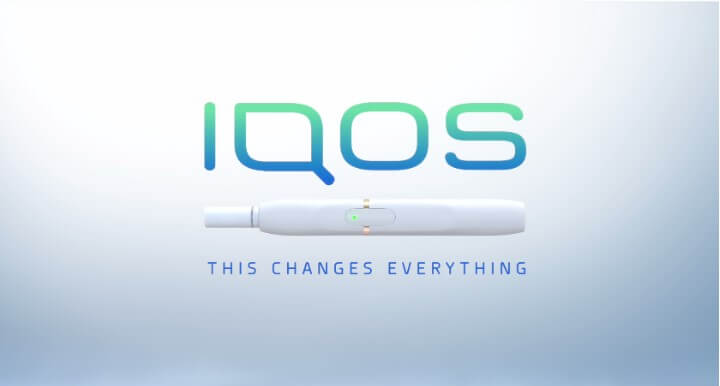
* material taken from the site: rau.ua
Brands position such products as less harmful, attracting audiences through scientific studies that support these claims. Additionally, through supplementary products, companies can highlight innovations and advanced technologies used in devices, rather than focusing on the tobacco product itself.
Of course, these efforts are very risky and can only be used in countries where strict bans on any cigarette and related product advertising are not in place.
Despite producing products that significantly harm health and contribute to serious diseases, most companies showcase initiatives to reduce their environmental impact. This includes the use of eco-friendly packaging or reducing emissions during production. Companies often share information about reducing harmful components in next-generation products, such as tobacco-heating systems, emphasizing their corporate social responsibility.
Another common method of promotion and advertising is the creation of subsidiary companies that are not directly related to tobacco products but convey positive messages using the corporate colors and fonts of tobacco companies. This allows companies to bypass restrictions temporarily and create a positive image for the brand.
Example of indirect advertising from a subsidiary company using the corporate style and colors of IQOS:

* material taken from the site: rubryka.com
The marketing of the tobacco industry demonstrates a high level of adaptability under strict restrictions. By employing creative strategies, companies maintain their market presence without violating the law. However, the success of these approaches depends on the ability to balance legal compliance with audience engagement.
A large number of restrictions and strict legislation create special conditions for tobacco company marketers, requiring them to find creative approaches while adhering to norms and standards.
Therefore, before launching any advertising campaign, it is essential to thoroughly study all information about bans and restrictions in the markets where the company intends to advertise. This includes analyzing the relevant laws and regulations to clearly understand what is permitted and prohibited in each specific country.
How to creatively use restrictions?
In most countries, the use of brand logos to promote tobacco products is prohibited, but restrictions on colors and fonts are less strict. Leverage these elements to create a unified image in consumers' minds through print, video, and online advertising.
Avoid overloading layouts and videos, and use simple, clear imagery that conveys positivity, ease, and freedom. Avoid emphasizing characters or themes popular among teenagers and those under 18, as this would be considered a violation of regulations.
Instead, focus on aesthetic content associated with the brand, without overt emphasis on the product. Remember, minimalist and sophisticated designs are better received by consumers and are perceived as elements of a modern lifestyle.
Create content focused on raising awareness about new types of products (e.g., tobacco-heating devices) with an emphasis on innovation. Of course, this approach is viable only if such additional products are not prohibited by the country's legislation.
Use informational materials in advertising, such as reviews of innovative products that enhance life and nature. Highlight the benefits consumers gain from using the products, without drawing excessive attention to the process or the product itself.
Research your target audience to understand what they associate with tobacco products. These associations can be used in advertising campaigns, reinforced with corporate elements such as colors and fonts.
When trying to veil your messages and intentions, the key is not to overdo it. Choose one or two clear phrases that convey your idea to the target audience and build all visuals around them. Over time, this approach will help you establish loyalty and a positive perception of the brand.
BannerBoo — a convenient service for creating creative designs
For effective promotion of their products, marketers and advertisers of tobacco brands need to create a large amount of content in various formats. This process is time-consuming and demanding, as it requires not only visually appealing content but also compliance with all rules and restrictions. In such cases, BannerBoo — an online service for creating professional advertising banners — can be a great solution for developing custom content.
BannerBoo offers a wide variety of templates, organized into specific groups according to different industries. This significantly simplifies the search for the required category and the development of a design.
The platform also provides numerous elements, fonts, and colors that you might need to create aesthetic advertisements for tobacco products. You can either use the options provided by the tool or upload your own.
A major advantage of BannerBoo is the ability to collaborate on a single project as a team, making real-time edits or changes to the design. Additionally, the service offers a feature for quick adaptation of designs to different sizes and formats. After creating one template, you can easily reformat it into a vertical orientation or a video with just a few clicks.
It is worth mentioning that the online design tool from BannerBoo is extremely simple and user-friendly. By registering on the platform using a Google or Facebook account, you gain access to a professional dashboard that is intuitive and convenient. Within a few minutes, you will understand all the features and be ready to use them to achieve your goals and ideas.
Using BannerBoo significantly streamlines work and saves specialists time, which can then be allocated to other important tasks, such as developing strategies or studying legislative updates.
Examples of Effective Placement
Due to strict restrictions on tobacco advertising, it is important to select locations and channels where advertising will not only be effective but also legal. Placements must comply with local regulations, ensure accurate targeting of adult audiences, and generate interest without overtly encouraging product use.
Companies can create their own websites and mobile applications to host indirect advertisements leading to these platforms. It is essential to implement age verification for access to content. Use the platform to publish informational articles, product reviews, and updates about innovations.
Through their own platforms, tobacco companies can engage with potential or existing customers using SEO promotion and content marketing.
Although direct tobacco advertising is strictly prohibited, informative content about the brand, innovations, or new technologies targeting adult audiences may be permissible in some countries. The key is to adhere to all regulations to avoid sanctions.
Advertisers can set up remarketing campaigns to engage consumers who have previously shown interest in their products. This builds audience loyalty and can significantly increase sales.
Place branded stands or posters inside stores or kiosks, as well as use branded displays allowed under the regulations of the specific country.
Example of point-of-sale advertising:

* material taken from the site: iqos.com.ua
Hidden advertising by bloggers or influencers without directly emphasizing the product is a highly effective way to promote tobacco products. Bloggers showcase a typical lifestyle that includes cigarettes or tobacco-heating systems, thereby creating a positive image of a free, successful life.
Brands can also advertise through native placements in movies, TV shows, or other videos, as long as it is not prohibited by law. A pack of cigarettes might simply lie on a table, or the main character might pull out a cigarette from a pack or retrieve the pack from a bag. All these scenarios are perceived as natural parts of daily life, but for tobacco companies, it’s an excellent opportunity to showcase their products to a large audience.
Tobacco brands can sponsor cultural or entertainment events associated with modern lifestyles without directly emphasizing their products.
Special magazines and billboards should not be overlooked. These are also effective advertising tools for tobacco manufacturers in countries where such advertising is not prohibited by law.
Marketers can develop a content marketing strategy that does not directly relate to the product. This could include historical facts about the brand, challenges faced during its operations, creative strategies used that either succeeded or failed, how restrictions impacted sales and operations, and much more.
Such articles are not only interesting to explore but also help shape a positive company image and foster brand loyalty. The key is to consider the age of consumers and present the content in an informative, non-promotional manner.
Effective placement of tobacco advertising depends on choosing legal platforms, precise targeting, and creativity in formats. Compliance with legislation, transparency, and aesthetics allow brands to remain competitive even under strict regulatory conditions.
Tobacco advertising is one of the most ethically controversial topics in marketing. On the one hand, brands aim to attract consumers; on the other hand, tobacco products have proven negative health impacts, which impose moral and social responsibilities on companies. Several factors contribute to this societal perception.
Impact on Youth
Despite the fact that all tobacco products are harmful to health, companies see youth as a potential target audience and aim to engage with them as early as possible.
Youth is the most vulnerable period, during which it is impossible to fully assess the health consequences. Even indirect tobacco advertising can attract the attention of minors. The use of bright colors, youth slang, or associations with popular influencers potentially stimulates interest in smoking among young people.
This raises significant ethical concerns for marketers and advertisers.
Hidden Advertising
Tobacco companies often use indirect promotional methods, such as collaborations with bloggers, event sponsorships, or branding of accessories. This can be perceived as deceit and dishonesty on the part of brands.
Social Responsibility
Tobacco companies increasingly claim their "responsibility" to society by supporting environmental initiatives or promoting less harmful products (e.g., electronic cigarettes). However, critics view this as a way to "whitewash" their reputation, and society may perceive it as deceit. This leads to distrust and reduced brand loyalty.
While tobacco companies generate significant revenue for governments through taxes and create jobs, the health damage caused by smoking far outweighs these benefits.
Tobacco brands emphasize that they do not force society to buy and use their products; they simply inform about advantages and innovations. However, consumers independently choose such a lifestyle, even as the price of these products increases year by year. For this reason, restrictions and regulations on tobacco product promotion are continuously being tightened.
Tobacco advertising walks a fine line between business interests and social responsibility. Ethical considerations must be a key factor in developing marketing strategies, not only to comply with laws but also to contribute to a better future for society.
Restrictions on tobacco advertising have significantly transformed how brands approach online promotion. Instead of using traditional advertising channels and direct marketing, companies are compelled to adopt creative, indirect strategies that comply with strict legislative norms and address the growing societal pressure over ethical concerns.
As a result, society is exposed to veiled advertising emphasizing corporate branding, social responsibility, and subtle promotion of innovative solutions.
Despite offering consumers the freedom of choice, paying substantial taxes to governments, and creating jobs, tobacco manufacturers face increasing regulatory constraints on promoting their products every year.
Governments aim to minimize the impact of tobacco advertising on society and reduce cigarette consumption to improve overall public health.
However, these restrictions open new horizons for the tobacco industry, forcing it to find solutions to promote products without breaking the rules.
Tobacco companies actively collaborate with bloggers and influencers, investing in indirect and hidden advertising while highlighting innovations and advanced technologies such as tobacco-heating systems like IQOS and GLO.
To diversify their product range and circumvent restrictions, companies are also developing smokeless tobacco products that are not subject to strict advertising and promotional rules in many countries worldwide.
Regardless, the advertising activities of brands continue. They constantly seek methods to promote their products without violating the law. Marketers and entire teams dedicate considerable time and effort to ensuring that their messages, albeit veiled, reach society. This involves creating various creative designs and banners.
The BannerBoo online builder greatly simplifies this work by providing quick solutions, an extensive library of templates, and graphic elements that can be utilized in promotional activities.
BannerBoo enables entire teams to collaborate on a single project, making quick adjustments or adding tasks seamlessly.
Using the builder saves significant time, as its user-friendly functionality allows for swift resizing and editing of designs.
BannerBoo is an effective solution for marketers and advertisers developing numerous creative materials for promotion across advertising channels. The builder offers creative ideas that can be utilized to engage target audiences with appealing and original banners.
Is there a ban on tobacco advertising?
Yes, tobacco advertising is banned in the EU, the USA, the UK, Ukraine, and other countries. Governments prioritize the overall well-being and health of their populations, introducing restrictions on the promotion of tobacco products to reduce their impact on both youth and adults.
Why should tobacco advertising be banned?
Despite the tobacco industry paying substantial taxes, creating jobs, and investing in health initiatives, it produces products that harm people's health. Smoking is one of the leading preventable causes of death. It causes severe diseases such as lung cancer, cardiovascular diseases, and chronic obstructive pulmonary disease.
How does tobacco advertising affect youth?
Since direct tobacco advertising is prohibited in most countries worldwide, marketers attempt to circumvent these bans by creating neutral advertising that attracts attention and showcases a free, modern lifestyle. Youth are the most vulnerable audience, finding it difficult to assess the health consequences of smoking.
Is vaping advertising allowed?
It depends on the country where you want to promote vaping, as legislation and restrictions vary significantly. For instance, in most EU countries, vaping advertising is allowed but strictly regulated. Restrictions include limits on liquid strength (no more than 20 mg/ml) and capacity. In Ukraine, Romania, and Turkey, vaping and e-cigarette advertising are treated as equivalent to tobacco products and are banned by law.
How do tobacco companies advertise today?
Given the stringent restrictions on tobacco advertising, marketers and advertisers still find ways to promote their products while adhering to laws and regulations:
Native (hidden) advertising;
Advertising through bloggers and influencers;
Content marketing on brand-owned platforms with age verification;
Sponsorship, among other methods.